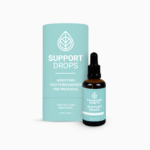It is that time of year – cooler weather, longer nights and…flu.
The influenza virus is, again, a hot topic of conversation at the moment as the rates of those affected start to rise. Last year saw 250,000 people in Australia diagnosed with the virus and almost 1,100 deaths were attributed to it.
Some of the measures being rolled out across the country in an attempt to avoid another bad flu season include flu vaccinations and the provision of Tamiflu, an antiviral drug.
What is Tamiflu?
Tamiflu (active ingredient oseltamivir) is a prescription drug that is said to lessen the severity of episodes of the flu. It is a neuraminidase inhibitor, a group of medications that blocks the neuraminidase enzyme, found on the surface of the flu virus and which enables it to reproduce from the host cell.
There was a shortage of Tamiflu in some parts of Australia last year as flu-stricken patients rushed to get hold of it. But, there is some debate over whether it is, in fact, helpful at all.
The Cochrane Review into neuraminidase inhibitors is based on 20 trials concerning Tamiflu and 26 concerning Relenza (another neuraminidase inhibitor). It shows a small decrease in the length of time people suffered from the flu after taking such medication – but only half a day or so. Plus, there is little evidence to suggest that such medications reduce the number of hospitalisations due to flu or are instrumental in limiting the spread of the virus from person to person.
“We now have the most robust, comprehensive review on neuraminidase inhibitors [NIs] that exists,” said Dr David Tovey, Editor-in-Chief of The Cochrane Library. “Initially thought to reduce hospitalisations and serious complications from influenza, the review highlights that [NIs are] not proven to do this, and it also seems to lead to harmful effects that were not fully reported in the original publications. This shows the importance of ensuring that trial data are transparent and accessible.”
So What Are the Side-Effects of Tamiflu?
Despite doubt over its effectiveness, it is clear by the shortages last year that people are still happy to take it. But, as with all medications, it has some side-effects.
According to NPS MedicineWise, a not-for-profit independent information organisation that helps people make informed decisions about their healthcare, side-effects of Tamiflu can include:
“Nausea (feeling like vomiting), vomiting, dizziness/spinning sensation (vertigo), headache, stomach ache, indigestion, diarrhea, cough, bronchitis, asthma (breathlessness, wheezing, a cough sometimes brought on by exercise and a feeling of tightness in the chest), sinusitis (stuffy nose and/or feeling of tension or fullness in the nose, cheeks and behind the eyes, sometimes with a throbbing ache), runny nose or nose bleeds, ear problems or ear infection, conjunctivitis (discharge from the eyes with itching and crusty eyelids), visual disturbances, insomnia (difficulty sleeping), fatigue, aches and pains, mild skin rash.”
Tamiflu has, albeit rarely, also reportedly been linked to psychotic episodes. In one particular instance a 6-year-old girl is believed to have allegedly suffered such a reaction when she ran away from home and tried to jump out of a second-storey window.
How to Combat the Flu Naturally
If you decide against taking Tamiflu or other medication to fight the flu this year, you’ll be pleased to know there are measures you can take to boost your immune system naturally. For example, these 5 foods have been shown to boost your immune system, helping to ward off colds and flu:
- Fresh Ginger – A natural treatment for the common cold and flu. Try making your own ginger tea by steeping some in hot water.
- Turmeric – Curcumin is the active component in turmeric and is antifungal, antiviral, anti-inflammatory and antibacterial. It’s so easy to incorporate turmeric into your diet – you might like to try this recipe here or here.
- Zinc rich foods – Eggs, liver, oysters, pepitas and red meat are all great sources of zinc, which can help reduce the symptoms of cold and flu.
- Oregano oil – A powerful antiviral and antifungal and great for treating sinus problems, viral infections, inflammation and more. Click here to find out how to use oregano oil.
- Thyme – Great for a nasty cough and nasal congestion. Try adding a couple of teaspoons to Changing Habits Broth and drinking throughout the day.
See this blog for more information about fighting off winter sickness naturally.
Have you ever resorted to medication to fight the flu? Or do you prefer to do things naturally? Share your experiences below.
References:
https://www.ncbi.nlm.nih.gov/pmc/articles/PMC525087/
http://www.cochrane.org/news/tamiflu-and-relenza-getting-full-evidence-picture
https://thenewdaily.com.au/life/wellbeing/2018/04/13/flu-influenza-vaccine-prevention/
http://www.abc.net.au/news/2017-08-18/flu-drug-shortage-queensland-tamiflu/8819498
https://www.nps.org.au/medical-info/medicine-finder/tamiflu-capsules









0 Comments